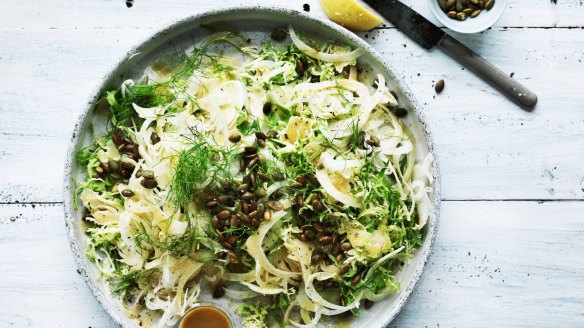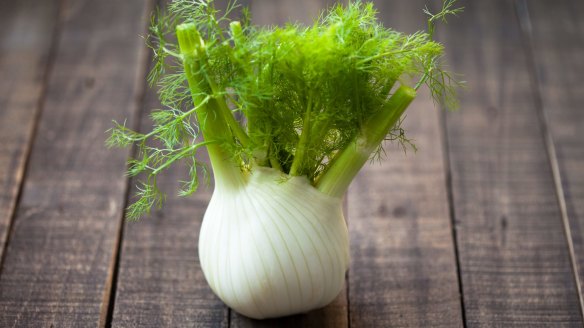Fennel: Everything you need to know

What is it?
Fennel is a Mediterranean plant bred from wild fennel to produce a swollen, fleshy stem. A member of the carrot family, its umbrella-shaped flowers produce aromatic pollen that fertilises the flowers to produce fragrant seeds, which taste of mild anise. The fronds are beautiful and delicate, and also have a mild anise flavour. The fleshy stem or bulb is firm and made of engorged flattened stems that cup inside each other, connecting to a central stem that then forms the root. The hollow woody stems have flavoured preserved foods such as olives and salted lemons since classical times. In the Greek myth, Prometheus stole fire from the gods by hiding it in the hollow of a fennel stem. According to the British Museum, the Greek word for fennel is marathon, and the ancient Greek battlefield was said to be covered in the aromatic herb.

Why do we love it?
It is prolific, fragrant, durable, and long-lasting. Every part of the plant, bar the roots, is used in cooking. The essential oil anethole, which gives the leaves, stems and seeds their distinct anise aroma, is highly regarded in traditional medicine as an antioxidant, and fennel tea is given to those with upset digestion. Easy to grow and economical to use, it brings a lovely light, bright and sunny note to the kitchen during the depths of winter.
Who uses it?
Rosa Mitchell from Rosa's Canteen in Melbourne grew up under the shadow of Mount Etna in Sicily. "We didn't have dessert after a meal. We ate fruit," remembers the chef. "And in fennel season, mum would cut up the fennel into four, and we ate that. It was delicious for digestion. Mum never cooked it. She cut it into cubes and dressed it with orange, olive oil, anchovies, and chilli. At Canteen, I use a lot of fennel at this time of the year. I cook it down with onion and pork mince with some tomato passata to make a ragu." She also stuffs fennel with pork or cuts it in half or quarter lengthways, blanches it, drizzles with oil and butter, seasons, then sprinkles with parmesan and roasts until soft and golden. Mitchell considers herself lucky as she has a good supply of fennel from her aunt, Rita Faranda from Faranda Farms in Melbourne's West. In French Lessons, Sydney chef Justin North's seminal tome on French technique, he blends the fronds with parsley, oil, hot water, and seasoning to make a vibrant green and aromatic coulis. He also makes an escabeche by slowly cooking fine slices of fennel in olive oil and dressing the translucent pieces with chardonnay vinegar infused with saffron.
How do you use it?
Sliced fennel bulb loves salt, olive oil, orange juice and oranges. Together, they make a perfect salad to serve with fish. Get yourself a Benriner vegetable slicer from Bunnings or Essential Ingredient. It's a mandolin by any other name and perfect for cutting fennel into beautifully fine slivers. Combine finely sliced fennel and cabbage for a zingy slaw or mix with celeriac to make a remoulade. Use the seeds in a meaty stew to add a high note, or crush and add to fried chicken batter with white pepper. The seeds love pork – make sausage rolls with pork and fennel sausage meat. Quickly blanch the delicate fronds and add to batter for fried fish. Dust fennel pollen over an oiled chook before roasting or use a tiny amount with lemon and lime juice for scallops ceviche.
Where do you get it?
Farmers' markets, greengrocers, supermarkets and online farms.
After more than 10 years of answering readers' vexing culinary questions, Richard Cornish has turned his focus to ingredients. Suggest an ingredient via email to brainfood@richardcornish.com.au or tweet to @foodcornish.
Appears in these collections
- More:
- Food
- Brain food
